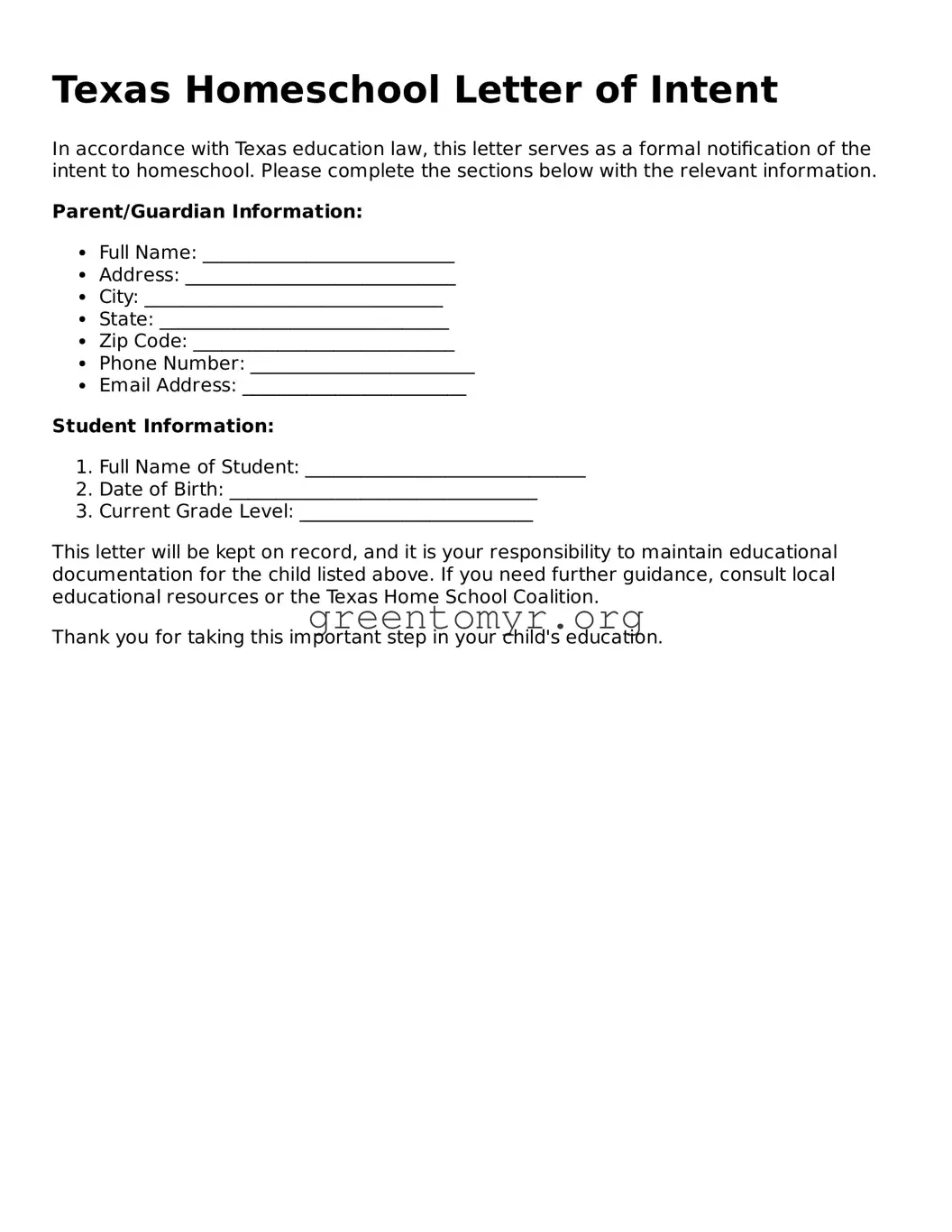What is the Texas Homeschool Letter of Intent?
The Texas Homeschool Letter of Intent is a formal document that parents or guardians submit to notify their local school district of their decision to homeschool their children. This letter informs the district that the parent will assume responsibility for the child's education, complying with Texas state laws regarding homeschooling.
Who needs to submit a Letter of Intent?
Parents or guardians who choose to homeschool their children, ages 6 to 18, are required to submit this letter. This includes families who are removing their child from public or private school for homeschooling purposes. It is essential to inform the school district, ensuring compliance with legal requirements.
When should the Letter of Intent be submitted?
The Letter of Intent should be submitted as soon as a decision is made to homeschool a child. While Texas law does not specify a deadline, it is advisable to send the letter before the school year starts or promptly after deciding to withdraw a child from a traditional school. This helps avoid any complications regarding school attendance requirements.
Typically, the Letter of Intent should include the following information:
-
The name of the parent or guardian.
-
The names and ages of the children being homeschooled.
-
The address where the homeschooling will take place.
-
A statement indicating the desire to homeschool the children.
Including this information ensures clarity and helps prevent any misunderstandings with the school district.
Do I need to register my homeschool with the state?
No, Texas does not require parents to register their homeschools with the state. Parents have the freedom to design their own educational curriculum without formal oversight. The submission of the Letter of Intent serves mainly as a notification to the school district and does not imply registration.
How can I submit the Letter of Intent?
Parents can typically submit the Letter of Intent by mail or sometimes via email, depending on the policies of their local school district. It is recommended to check the specific submission guidelines on the district's website or contact them directly. Keeping a copy of the submitted letter for personal records is always a good practice.
While Texas does not mandate a specific format for the Letter of Intent, it should be clear and concise. A simple, straightforward letter stating your intention to homeschool, including the required information, is generally sufficient. Some families choose to use templates available online, but personalizing the letter is always encouraged.
What if I change my mind about homeschooling?
If a family decides to stop homeschooling and enroll their child back in a public or private school, it is necessary to notify the school district of this change. School districts may have varying requirements for re-enrollment, so consulting the school for specific procedures is important.
Are there any support groups for homeschooling in Texas?
Yes, many support groups and organizations exist to assist homeschooling families in Texas. These groups often provide resources such as educational materials, social activities for children, and networking opportunities for parents. Connecting with local homeschooling communities can greatly enhance the homeschooling experience.
